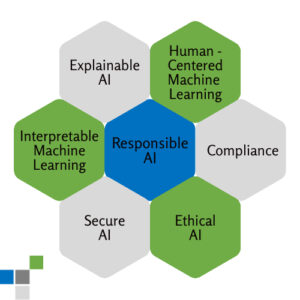Artificial Intelligence closed gaps in technological mysteries, medical innovations, and efficient production. But it has led to the question of how bias comes into play. Many companies have worked towards creating responsible AI practices: to create a better and safer technical environment.
When companies develop AI technology there can often be hidden quirks such as bias. Depending on the technology, much of it can be hidden from us, the consumers. This means there needs to be steps to create transparency and responsibility to create a better future for technology. With our ever-growing world, it is highly important to get the reassurance that our data is safe and secure.
 |
What is Responsible Artificial Intelligence?
It is a governance framework that points out a company’s plan on how they address the contentions and challenges associated with AI. It is there to make sure it is explainable, understandable, and helpful. This way having proper responsible AI allows the consumer to know the company has anti-discriminatory practices. |
What are the principles of Responsible Artificial Intelligence?
Having this governance is highly important to make sure there is no bias present. Often when AI is programmed there can be bias introduced. This means that the programming developed from AI can also be biased. As such, this is a destructive process that can impact consumers and beneficiaries. That is why responsible AI has 4 principles: fairness, transparency and explainability, privacy and security, and accountability.
- All AI should be fair and equal to all people, races, gender, and sexual orientations. By creating a fair platform, it allows us to wipe away discrimination.
- By being transparent and explainable, it should be easy to understand for consumers and other producers.
- By having good privacy and security, data can be easily secured and unable to be hacked.
- Lastly, by being accountable, creators of AI systems can be responsible for their work.
Now to implementation, how can a company design and implement Responsible AI technology?
First, develop a strong foot in governance and ethical standards. Once you get a good structure your AI can flourish into a fair and transparent area. Next, Design the technology with the principles listed above. Creating this in the earliest stage allows for a highly open and forthright model. Then, make sure you monitor your performance through the use of metrics. Lastly, you should reskill your AI. You want to see how it affects different types of people and develop plans on how to solve that.
Through that quick overview of responsible AI, it should be clear that this governance is highly important for the developing AI/ML world. As society is always on their phones, on social media, or googling about anything, it is crucial to put in place a responsible AI system.
